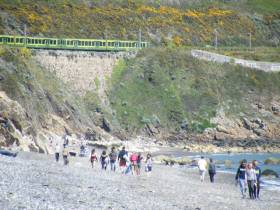Displaying items by tag: Litter Free Seas
The Big Beach Clean Next Weekend (15-17 Sept): Take Part And Make A Positive Difference!
#BigBeachClean - Clean Coasts Big Beach Clean returns this year when the event takes place next weekend (15-17 September). So there's still time to register your pariticpation to make a positive difference in helping the environment.
Clean Coasts engages communities in the protection of Ireland’s beaches, seas and marine life. The programme is operated by the Environmental Education Unit of An Taisce which is funded by the Department of Environment. Once again the Clean Coasts Big Beach Clean team have signed up with the International Ocean Conservancy for the International Coastal Cleanup event.
Nearly 800,000 volunteers from over 90 countries in 2016 removed 8,193 tonnes of marine litter from the world’s oceans. It is hoped that everyone will join the movement for litter free seas!
The stark reality is that around a staggering 10 million tonnes of litter end up in the world’s oceans annually which causes destruction that can be devestating to both plants and marine life.
So what is the problem of “marine litter” -firstly the term covers a wide range of materials which have been deliberately discarded, or accidentally lost on shore or at sea. In addition to materials carried out to sea from land, rivers, drainage and sewerage systems, or the wind (European Commission, 2013).
By getting involved in the Clean Coasts movement for litter free seas, you can be part of the world’s largest coastal cleanup event and marine litter survey. Help the coastline you love by taking part in Clean Coasts Big Beach Clean to protect our beaches, seas and marine life locally, nationally and internationally.
Free clean-up kits are available (while stocks last!) which include gloves, bags, data collection cards, posters and high-vis vests are available while stocks last. Sign up online below or call Clean Coasts on 01 400 2210.
It's so simple to take part in the Big Beach Clean be it individually, with friends and family in addition to groups.
So get registering your group type now!... it's only a click away for your own beach cleaning event!
To register online click here and for information that includes links to some useful resources you will need for your clean-up:























